Labneh, also spelled labnah, labne or lebne, is a versatile Middle Eastern strained yogurt with a spreadable texture similar to cream cheese. This delightfully tangy yogurt cheese is so easy to make, this recipe will become a staple in your kitchen.
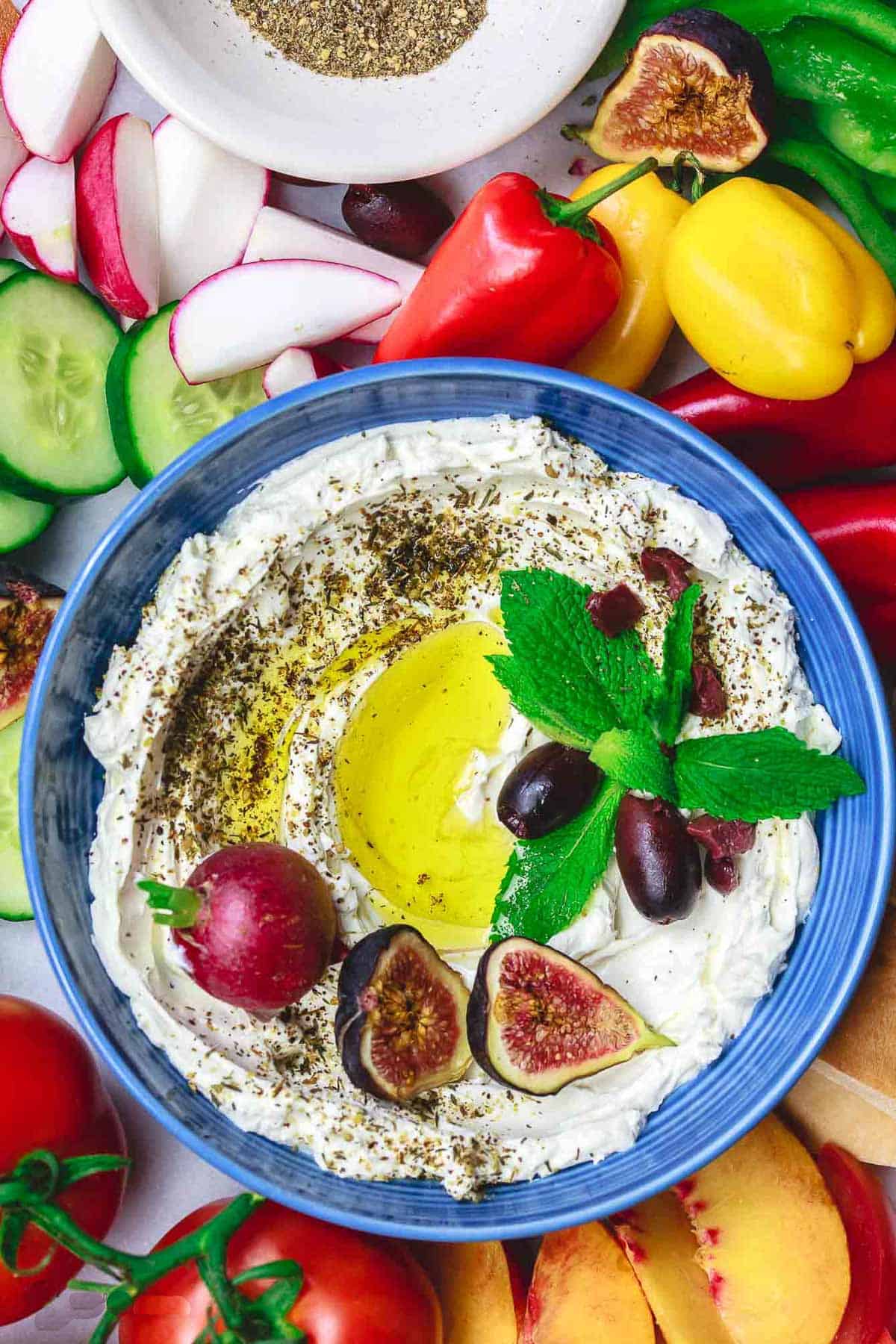
If you love the tangy flavor of sour cream and the versatility of cream cheese, but you’re looking for a healthier option, this labneh recipe is it!
Labneh, a creamy yogurt cheese, is a staple in Middle Eastern cuisine, where its thick consistency makes it perfect for spreading on sandwiches or breads like Turkish Simit, creating a dip for fresh veggies, or using it as a base of any number of recipes like Roasted Beets. This simple recipe requires minimal effort or hands-on time; the hardest part of making it is waiting!
Preparing labneh is a straightforward process that involves straining plain whole-milk yogurt seasoned with a little salt. The straining process removes the whey from the yogurt, creating a thick spread that can be enjoyed plain or dressed up with your favorite herbs and spices. Once you make labneh at home, I’m confident you’ll find many ways to enjoy it!
What is Labneh (Labne)?
Think of labneh as a type of yogurt cheese. You don’t need rennet or any special cheesemaking equipment to make it, just a fine mesh strainer lined with cheesecloth or a tea towel. If you think of Greek yogurt as strained yogurt, labneh is extra-strained yogurt.
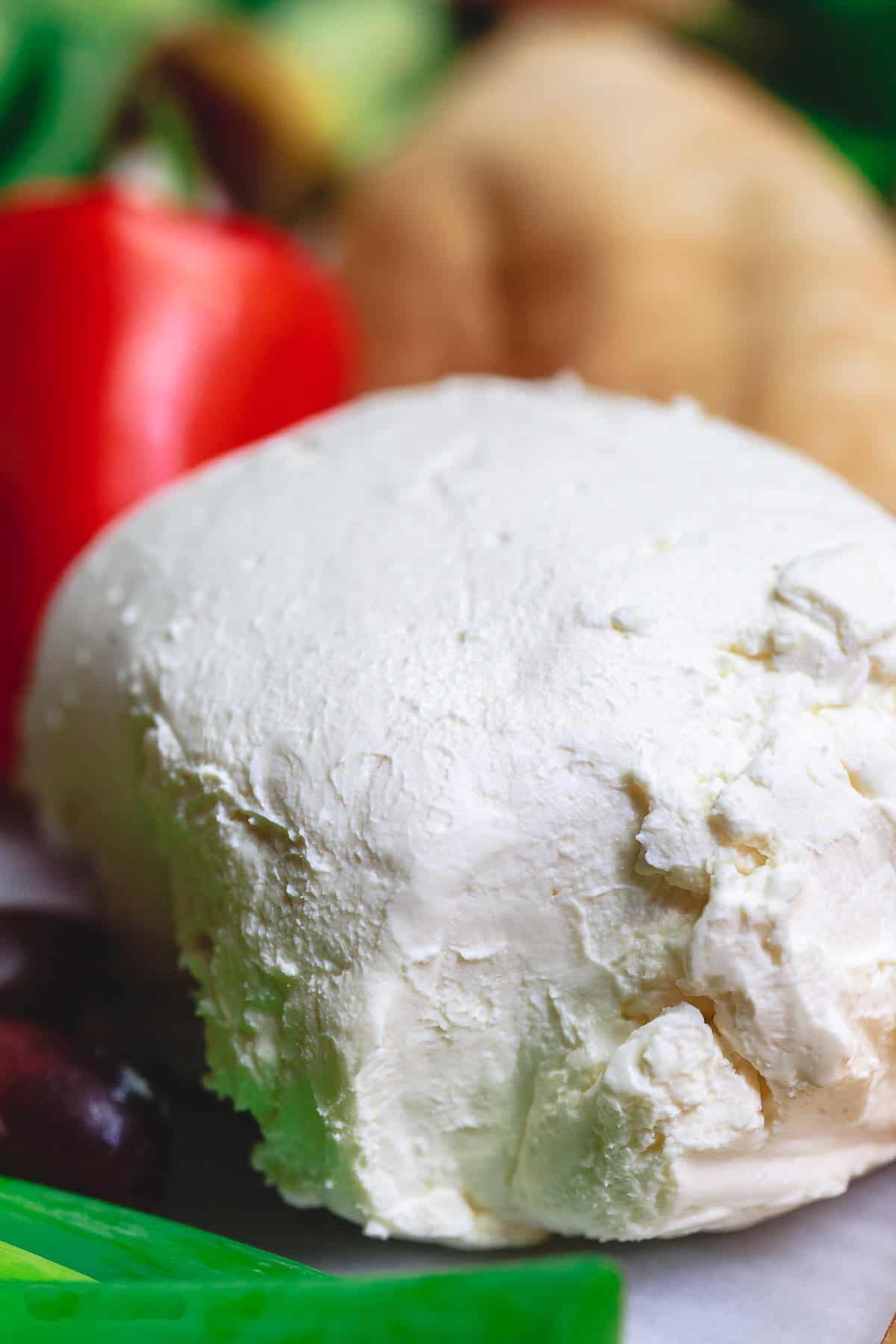
Ingredients for Labneh
Making labneh at home requires just two ingredients:
- Yogurt: I recommend starting with goat milk yogurt or high-quality whole milk yogurt, but you can use any plain yogurt you like to make labneh. Starting with Greek yogurt means that there will be less moisture to drain away and even non-dairy plant-based plain yogurt will work in this recipe.
- Salt: Adding a little salt helps draw the whey out of the yogurt, but it’s largely there for flavoring. The yogurt will still release its liquid without adding the salt. If you’re trying to avoid added salt in your diet you can reduce the quantity or omit it altogether.
How to Make Labneh
Setting up this labneh recipe takes only moments. Most of the time required is hands-off.
- Season the yogurt. Pour 4 cups of yogurt into a large bowl. Stir in 3/4 teaspoon salt.
- Drain the yogurt. Line another large bowl with a linen, flour sack, or muslin towel (or several layers of cheesecloth.) Pour the yogurt mixture into the towel. Pick up the edges of the towel and tie it at the top. Hang from a kitchen sink faucet to drain for 24 to 48 hours. Alternatively, set a large fine mesh sieve, over a deep bowl. Line the sieve with cheesecloth or towel. Add the yogurt mixture. Cover gently with the overhang and set aside on the counter, or in the fridge, to drain for 24-48 hours. If using a towel to make this do not use terrycloth.
- Serve. Spread the labneh in a bowl and top with extra virgin olive oil, za’atar (or chopped fresh herbs like mint or parsley). Add warm Pita and fresh veggies for dipping. Enjoy!
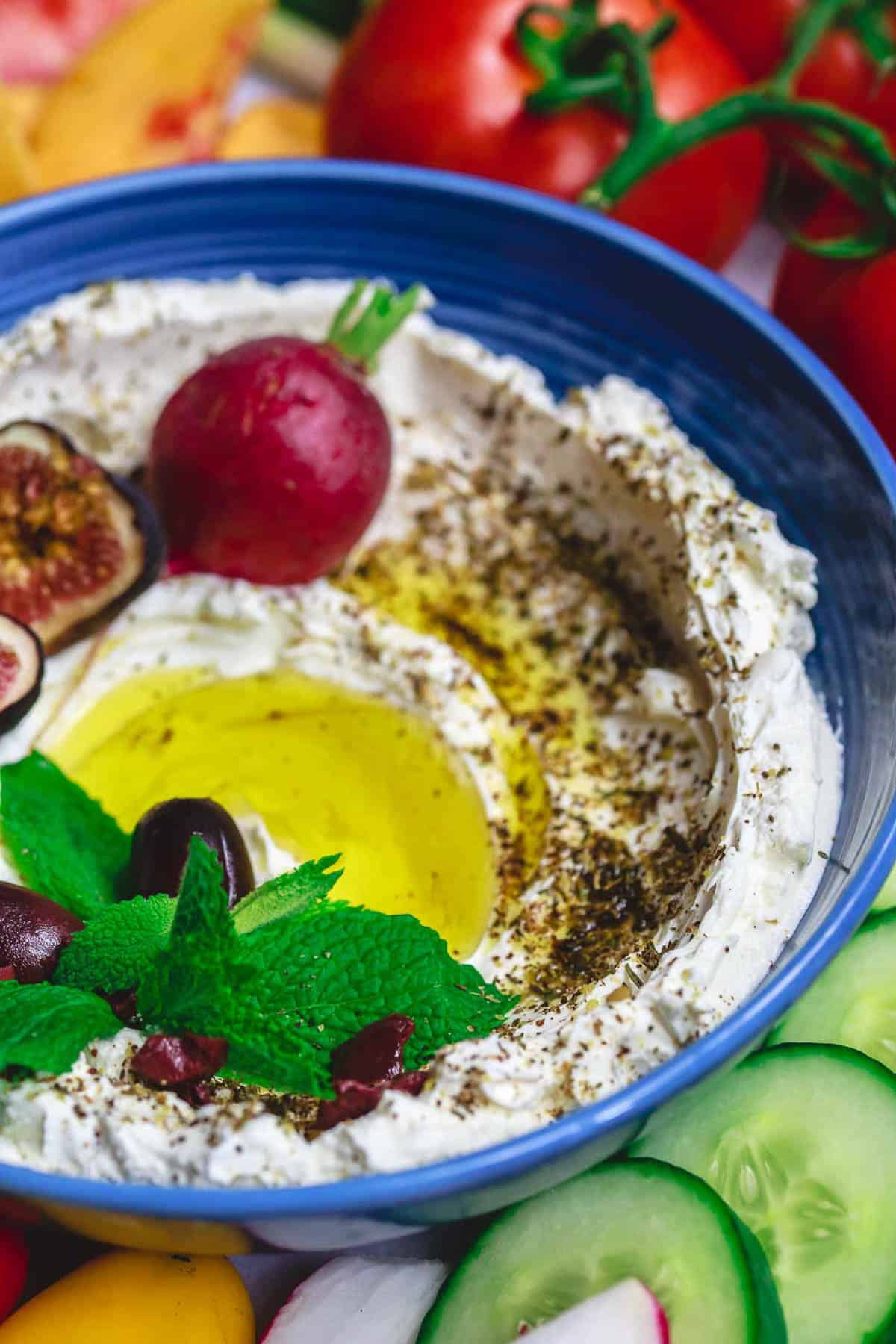
Ways to Mix it Up
Think of this labneh recipe as a blank slate that can easily accommodate nearly any mix-in, either sweet or savory.
- Fold in herbs or spices: Customize the flavor profile of your labneh to suit a specific recipe by mixing in za’atar, oregano, chopped fresh herbs, or lemon zest.
- Make it spicy: Fold in chili flakes or hot sauce to make a smoky, spiced labneh that’s particularly good with grilled chicken or vegetables.
- Add some sweetness: Drizzle with or fold in some honey, fig jam, date syrup, or pomegranate molasses to make a base for roasted fruit or to spread on a slice of toast.
- Swirl in something: Add any savory condiment to transform labneh into a complex dip. Sun-dried tomato pesto or Olive Tapenade are particularly good.
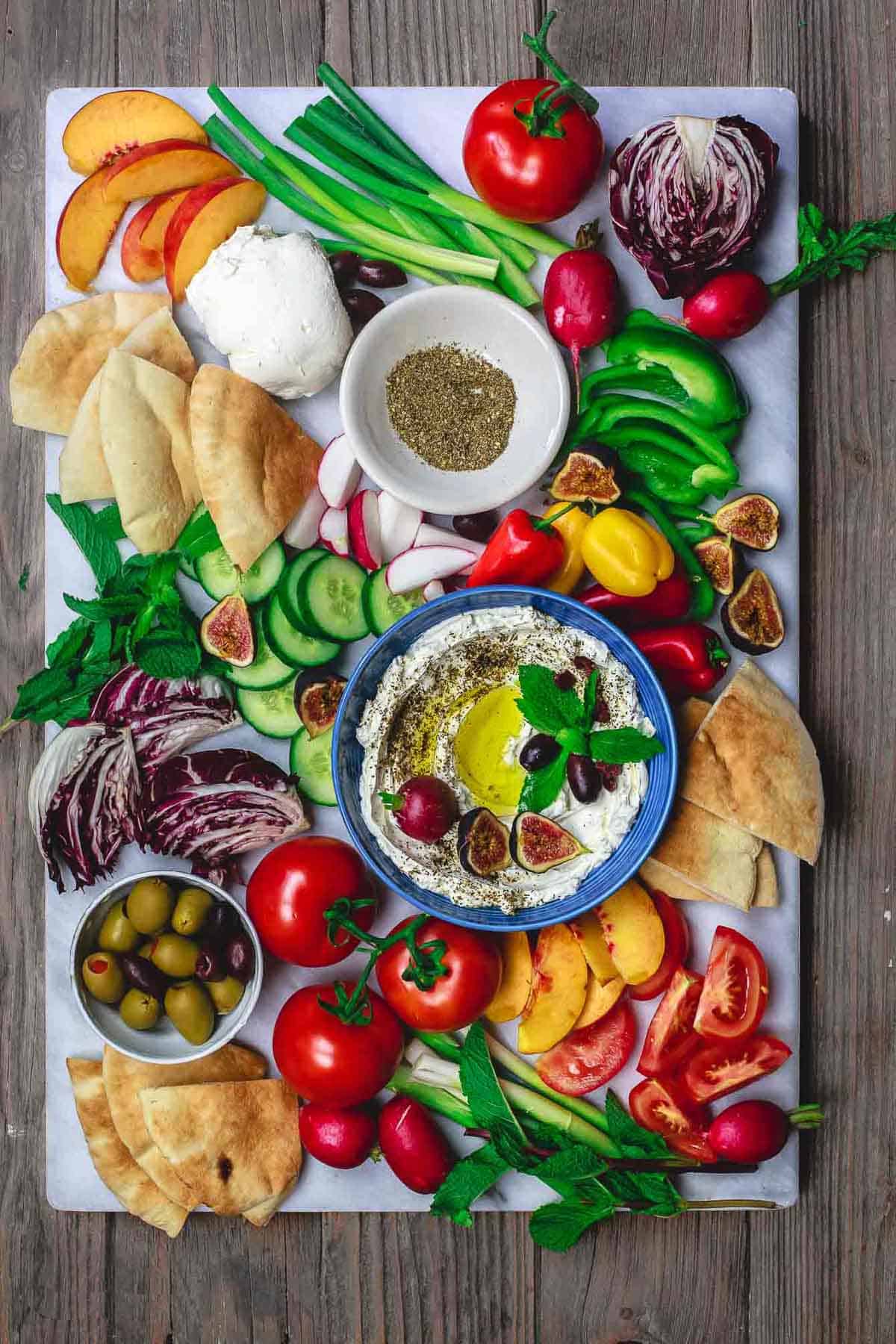
What to Serve with Labneh
Once you’ve made yogurt cheese, consider it a fridge staple and an ingredient that can easily morph depending on the meal. Spread it onto a plate and top it with roasted vegetables for a nearly effortless dinner. Mix in some fresh herbs and minced garlic and you’ve got an easy sauce for Lemon Garlic Chicken or any other grilled chicken recipe. Grate in a cucumber and think of it as a quick version of Tzatziki.
I also like to use it as a stand-in for mayonnaise to lighten up the classic Southern Tomato Sandwich, and it’s creamy enough to replace cream cheese in the fastest (and best) Cucumber Sandwiches.
Because of its lush texture and tangy flavor, it’s also lovely with the sweet flavors of fruit and honey. I love to use it to make a Mediterranean version of Strawberry Shortcake. A dollop of labneh would be a delicious stand-in for whipped cream with any fruit tart or cake.
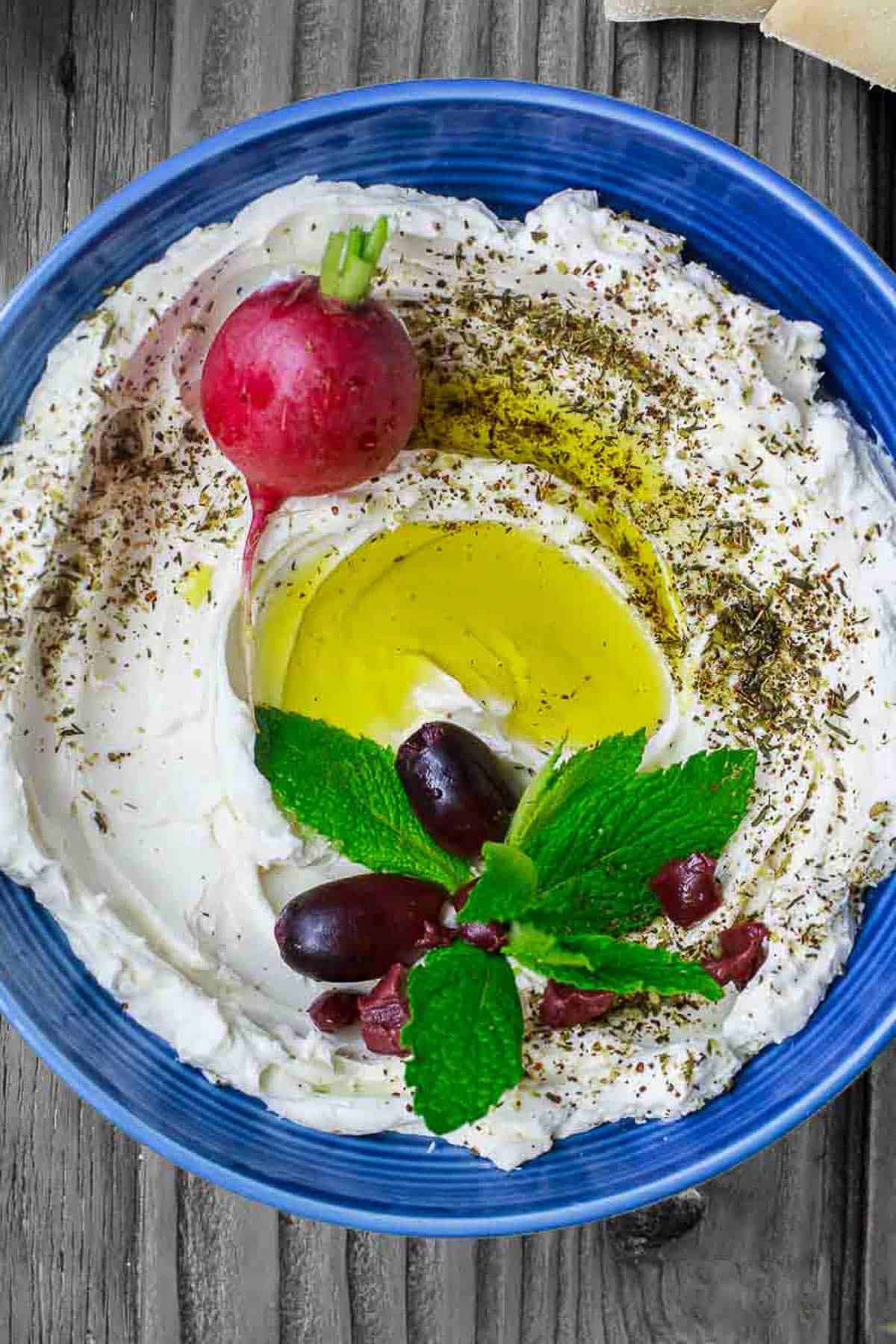
How to Use the Whey
The golden, watery liquid that drains out of the labneh as it drains is called whey. It’s the liquid portion of the milk and it’s rich in protein and micronutrients. On its own, whey has a tangy, almost lemon-like flavor and you can cook with it similar to the way you might use buttermilk. You can discard it, but there are lots of ways to use it in your cooking.
Because of its acidity, it has the same tenderizing effect that yogurt does on meat, so you can use it in place of yogurt to marinate chicken to make Gyro Bowls or in our Best Chicken Marinade. You can also use it to replace the water in bread recipes such as our Easy Homemade Pita Bread, a no-waste kitchen tip to add even more protein and nutrition to your baking!
How to Store Labneh
Store finished labneh (and the whey, if you like) in separate, airtight containers in the refrigerator for about two weeks. Like yogurt, labneh has a relatively long shelf life for a fresh dairy product. Make note of the “use by” date on the yogurt you use to make it as a good general guideline for the resulting labneh, too.
To better preserve your labneh, you can form it into balls that are about 1 tablespoon each in size. Place the balls in a large sterilized, airtight jar and pour extra virgin olive oil to cover. Make sure the balls are completely submerged in the oil at all times.
Cover the jar tightly and leave at room temperature or in the fridge, if you live in a warm area. They should keep for up to 2 months. If you store oil-covered labneh balls in the fridge the oil will solidify. Just set the jar out at room temperature and hour or so before you plan to serve them.
More Dips and Spreads
Dips and Condiments
Homemade Farmer’s Cheese
Appetizer and Mezze
Creamy Whipped Feta Dip
Appetizer and Mezze
Artichoke Dip with Feta
Browse all Mediterranean recipes.
Visit Our Shop.
Labneh
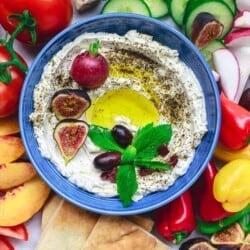
Ingredients
- 4 cups (32 ounces) whole milk yogurt
- 3/4 teaspoon kosher salt
To Serve (optional)
- Extra virgin olive oil
- Za’atar or chopped fresh herbs
- Warm pita bread
- Sliced vegetables
Instructions
- Season the yogurt. Pour the yogurt into a large bowl. Stir in the salt.
- Drain the yogurt. Line another large bowl with a linen or muslin towel (or several layers of cheesecloth.) Pour the yogurt mixture into the towel. Pick up the edges of the towel and tie at the top. Hang from a kitchen sink faucet to drain for 24 to 48 hours. (Alternatively, set a large sieve, lined with linen towel over a deep bowl. Add the yogurt mixture. Cover gently with the overhang of the linen towel, or another linen towel. Set aside on the counter, or in the fridge, to drain for 24-48 hours.)
- Serve. Spread the labneh in a bowl and top with extra virgin olive oil, za’atar spice (or chopped fresh herbs like mint or parsley). Add warm pita and fresh veggies for dipping.
Video
Notes
- Shop this recipe: Visit our shop to browse quality Mediterranean ingredients including the olive oil and za’atar used in this recipe.
- Store labneh in a tight-lid container in the fridge and use as a spread, like any cream cheese.
- Labneh will keep this way up to 2 weeks. Or, for longer storage, preserve it in olive oil. This more labor intensive option works only if the yogurt has been strained for 48 hours forming thicker labneh. At this point, roll the labneh into 3/4-inch balls. Place them on a large tray lined with a paper towel, cover them with another paper towel and refrigerate them overnight. When ready, place the labneh balls in a clean jar and pour high quality olive oil over them, making sure the labneh balls are completely submerged. Cover and refrigerate until needed; it’ll be good for months this way.
Nutrition
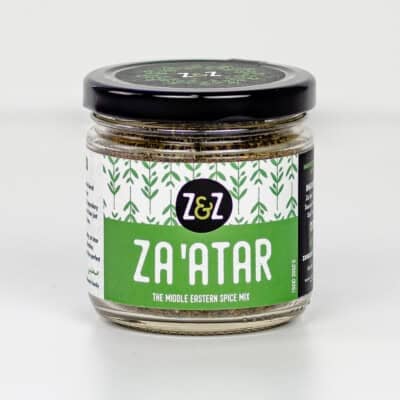
Try Our Favorite Za’atar!
Jazz up your labneh with this aromatic, tart, and savory spice blend.
*This post has recently been updated with new information for readers’ benefit.


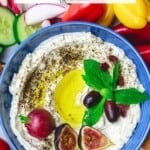
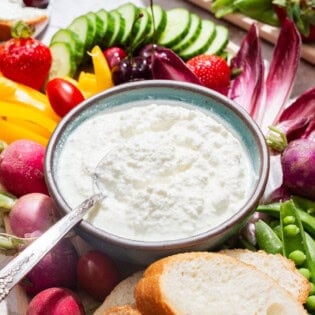

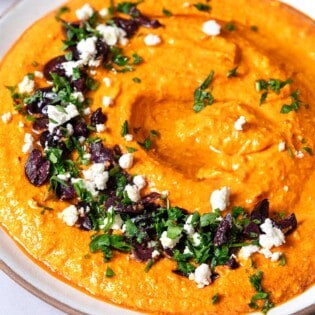
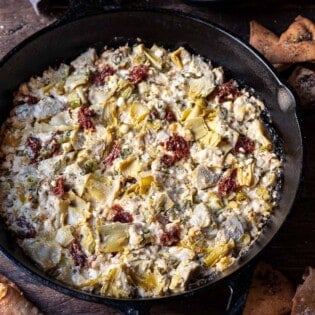
Suzy, the labneh is the most amazing spread and yet so easy to make. I did find goats milk yogurt at the health food store . And I now start my day with pita bread with labneh with Za’atar and strong cup of black coffee.
Reynoldo
Sounds PERFECT 🙂
I just want to clarify, you strain the yogurt in cloth for 24-48 hours at room temp? Then refrigerate it?
I’m really looking forward to having some fresh lebneh, I can’t find any around my city.
Hi, Rebecca! I typically put the yogurt in the fridge while straining.
Hi there! What fat % is whole milk yogurt? Just want to make sure im buying the right yogurt!
Hi Nathan, the yogurt container should clearly state “Whole Milk Yogurt.” So don’t buy “fat free yogurt” “0 fat yogurt” or “2% yogurt.”
Delicious alternative to cream cheese!!!
Simple and basic
It looks amazing and delicious I will try it today and send my feedback soon
Hope you love it, Dominic!
Hate to admit it but I’ve just lately heard of this! As my mother would say , what kind of a Syrian are you!! And she never made this! I can not wait to try it!!
I can’t wait for you to try it!
What kind of salt is best to use?
Hi Penny. I use Diamond Crystal Kosher salt.
The best to use is Palestinian salt.
I have my labneh rolled into balls and in the refrigerator, waiting to be added to some olive oil. I want to flavor them, and have seen some recipes where they are flavored before being put in the oil and some after. I would like to try before, but does the extra ingredients cause them to go bad more quickly? Also, if flavored before could I do a few different flavors, such as some rolled in za’atar and some in a different seasoning, and put them in the same jar of oil, or would that just muddle the flavors together? Thank you for your help!
Labneh rolled in za’atar is amazing, Katrina. Once you add the za’atar and place the balls of labneh in a sterilized jar then top with extra virgin olive oil. If sealed properly, and the olive oil covers it well, it should last well. I do keep mine in the fridge still even though you do not have to. Watch the top of the labneh jar, if anything begins to change color or look odd, it is starting to go bad.
Is it ok to leave it out for 24-48 hours? Will it go bad?
Hi, Nicole! As long as long as the labneh is rolled into small balls and submerged in olive oil, it can sit out at room temperature for 2-4 weeks.
Hi, can you make the labneh with low hat yogurt to cut down on the calories?
Sure!
I wonder is Labneh the same thing as kefir? I have the kefir grains at home and drink the kefir milk and cook with the kefir milk as well. I would love to make my own kefir cheese. I buy it at the store but prefer making at home. Can you send me a recipe if possible.Thanks for your reply.
Hi Gloria…not quite the same. Labneh is made of whole milk yogurt that’s been strained a while until it loses most of its liquid.
Can you send your posts including recipes to my email please?
Hi Darla, you can sign up for our e-mail list here: http://eepurl.com/bEH85v
I’ve made labneh several times using cheese cloth. Just be sure to use several layers. I typically use 3-4.
Thanks, Ann!
How do you think this would be in a pita dish. I plan on making pita bread, hummus, tzatziki, chicken, and a cucumber salad. Would this flavor be too strong and overwhelm the labneh?
Are you asking about adding Labneh to a sandwich with the ingredients you listed above?
Planning to make this soon.
Absolutely love all your recipes
I dropped my cholesterol 70 points and my LDL 53
Points since I have been eating the Mediterranean
Way
Took about 4 months to drop
Been told by our doctors this is the best way to
Be healthier. Thanks you are a fantastic cook!
Plan to make this soon.
Enjoy
What happens if you use yogurt from 2% milk? I make my own but use 2% and often prefer the lesser fat creamy cheeses. I just want to ensure it will still turn into labneh. Thanks for any advice!
Honestly, you do need full-fat yogurt for best results. But 2% may still work, just not sure you’ll get the taste and super creamy texture Labneh is known for.
Followed this recipe multiple times now, it’s so easy. I line the siv with paper towel and have to keep it in the fridge otherwise my cats will get to the labne first😅. Thanks 😊